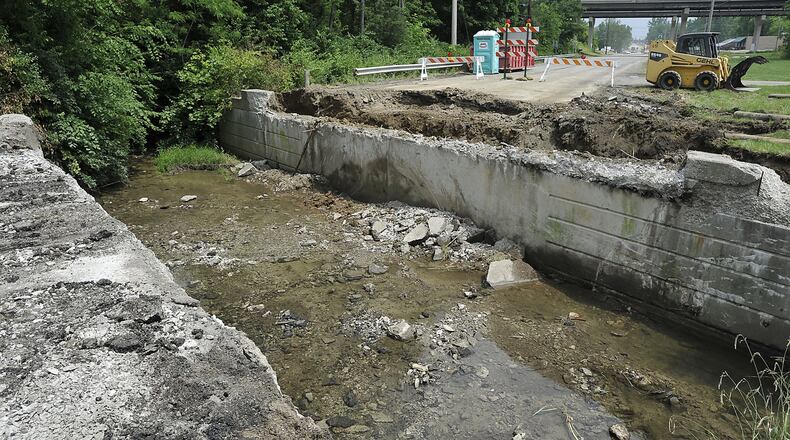Digging deeper
Springfield News-Sun reporter Tiffany Y. Latta reviewed records from the Ohio Bureau of Motor Vehicles and spoke with county engineers to explain what the decline in vehicle registrations means for area roads and bridges.
The number of vehicles registered in Clark County has dropped nearly 10 percent in five years, outpacing a statewide trend that has resulted in less money for counties to repair roads and bridges.
Registered vehicles in Clark County fell from 155,500 in 2008 to 140,300 in 2012. It was the largest drop in the Miami Valley and one that surpassed a 7 percent drop in vehicle registrations statewide, according to a Springfield News-Sun review of records from the Ohio Bureau of Motor Vehicles.
In 2011, the number of registered vehicles in Clark County dipped to its lowest point during that period to 139,700.
The drop in vehicle registrations has hit Ohio county engineers especially hard as it has resulted in a loss in revenue for departments already struggling to keep pace with the rising cost of construction materials.
“It comes at a bad time when everything else is skyrocketing … When those revenues aren’t there, it’s a double whammy,” said Fredrick B. Pausch, executive director of the Ohio County Engineers Association.
Last year, license fees accounted for nearly 40 percent of the Clark County Engineer’s Office budget, bringing in more $2.7 million, Clark County Engineer John Burr said.
Burr and all Ohio county engineers also received $2.3 million from the state gas tax. But the gas tax hasn’t increased in years and has not kept pace with the number of fuel efficient vehicles on the road or the rising cost of construction materials.
Asphalt and guardrails prices, for example, have increased 123 percent and 137 percent, respectively, since 2003, Burr said.
“The material prices are killing us. You put $1 million in and it goes half as far,” Burr said.
Montgomery County has seen its vehicle registrations drop 9.42 percent since 2007-2008.
Vehicle registrations account for two-thirds of that county’s $15 million engineer’s budget, said Montgomery County Engineer Paul Gruner.
The decline in registrations has resulted in fewer resurfacing projects and one less bridge project over a period of a few years, Gruner said.
“There are a lot of things we can do to improve the safety of roads, but we can’t do very many of them because the funding is just not there. A lot of times we can’t get our bridges replaced as soon as we could, or we have to close bridges,” Gruner said.
Champaign County Engineer Stephen McCall said the loss of license fee funding can have a greater effect on larger counties, such as Clark and Montgomery counties.
McCall said license fees account for 35 percent of Champaign County’s $1.3 million budget, and the gas tax makes up about 60 percent of the budget.
“It makes a difference in trying to forecast money and trying to plan. If you lose $100,000, it can greatly affect the projects that you plan. We just don’t have the money to invest in paving,” McCall said.
McCall said Champaign County has relied heavily on using chip and seal repairs to maintain roads and can cover five times as much using that method than paving.
“We’ve set up our office to do a lot of chip and seal because the cost of materials have pretty much doubled in the last 10 years. We have to be very creative and efficient in what we’re doing,” McCall said. “If we want to increase the level of service, we’re going to have to find other sources of funding.”
Area engineers say increasing the gas tax is not the solution because motorists are driving less due in part of higher gas prices and because vehicles are becoming more fuel efficient.
“It’s just going to continue to be eroded. It’s not dependable in the long term,” Gruner said.
Gruner said officials with the engineers association have discussed allowing county engineers to benefit from the Commercial Activity Tax, an annual tax imposed on the privilege of doing business in Ohio, measured by gross receipts from business activities in Ohio.
But Gruner said a better solution could be a tax or a flat fee based on miles driven or an increase in license fees to help balance the shortfall.
About the Author
